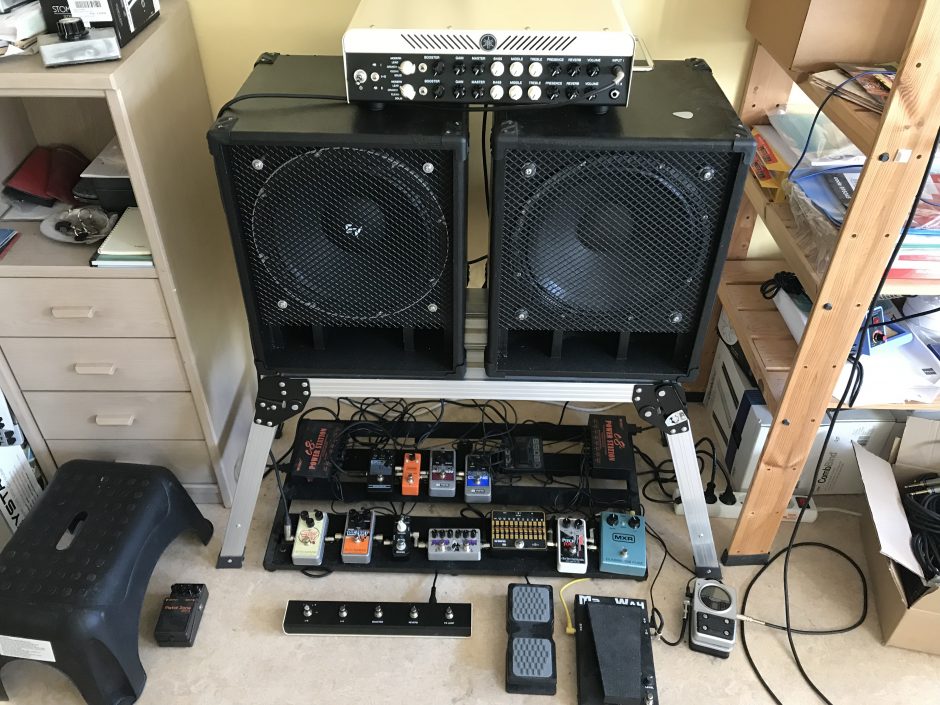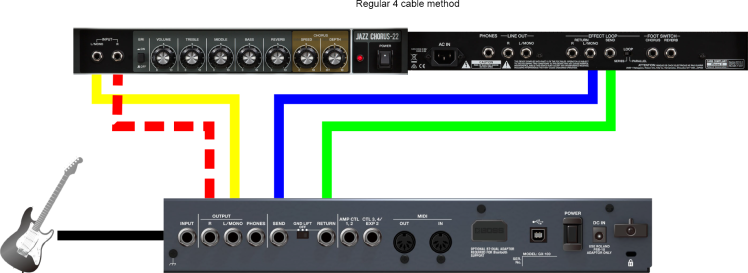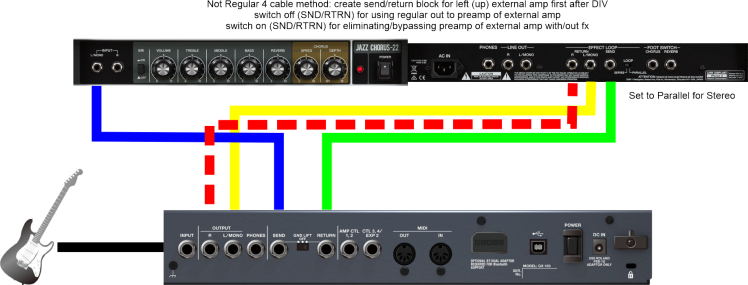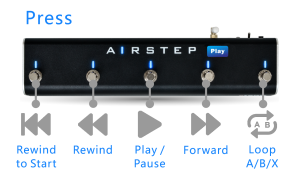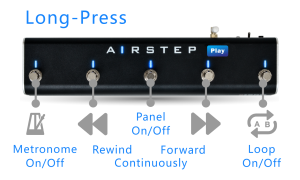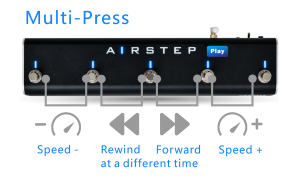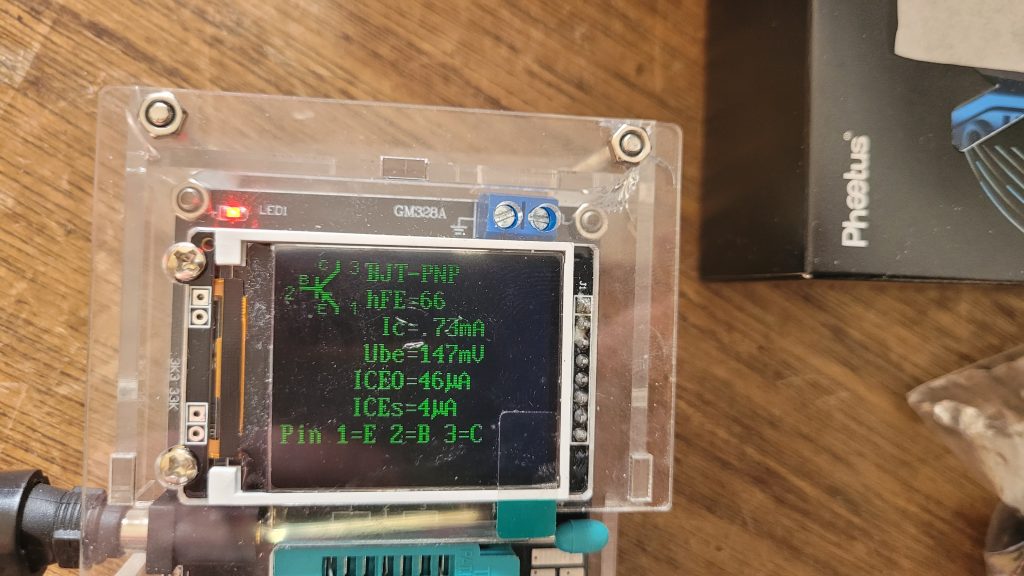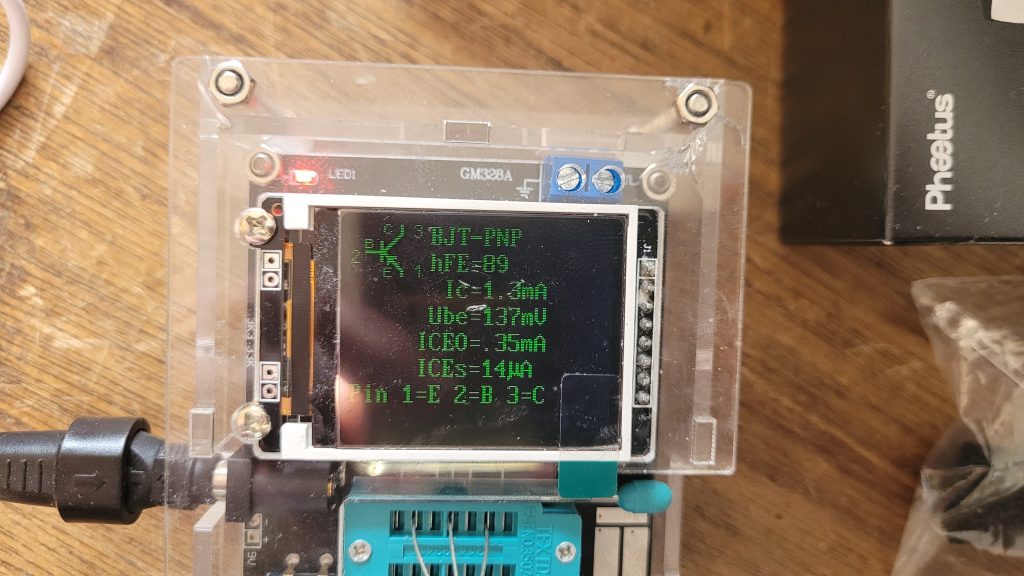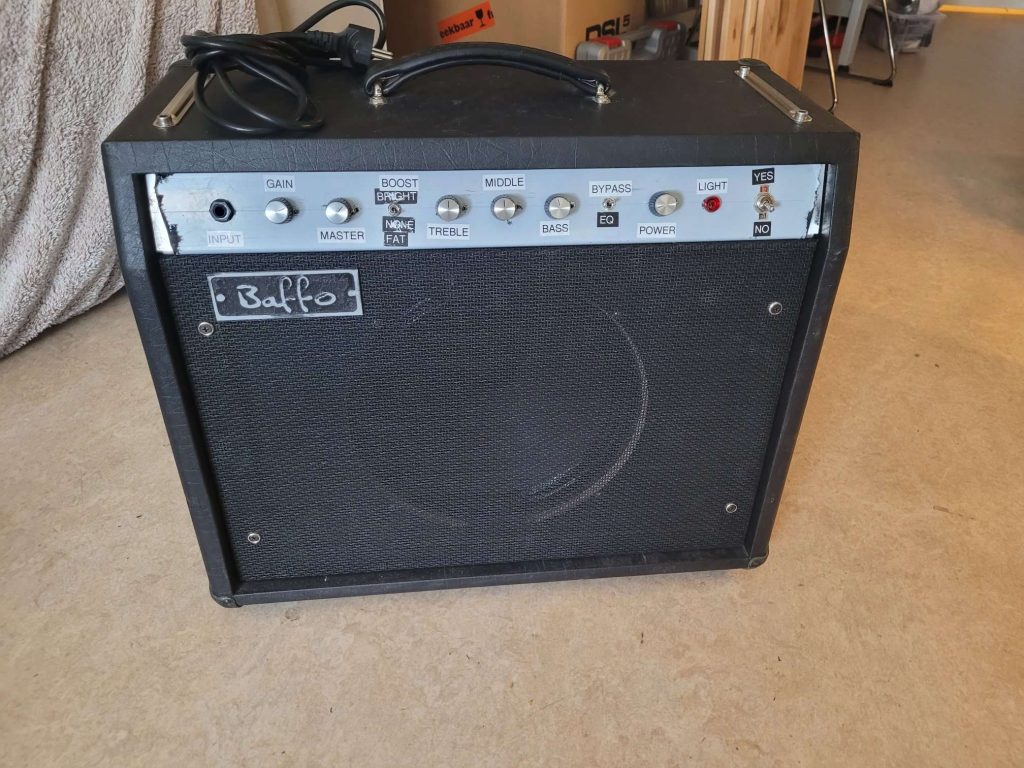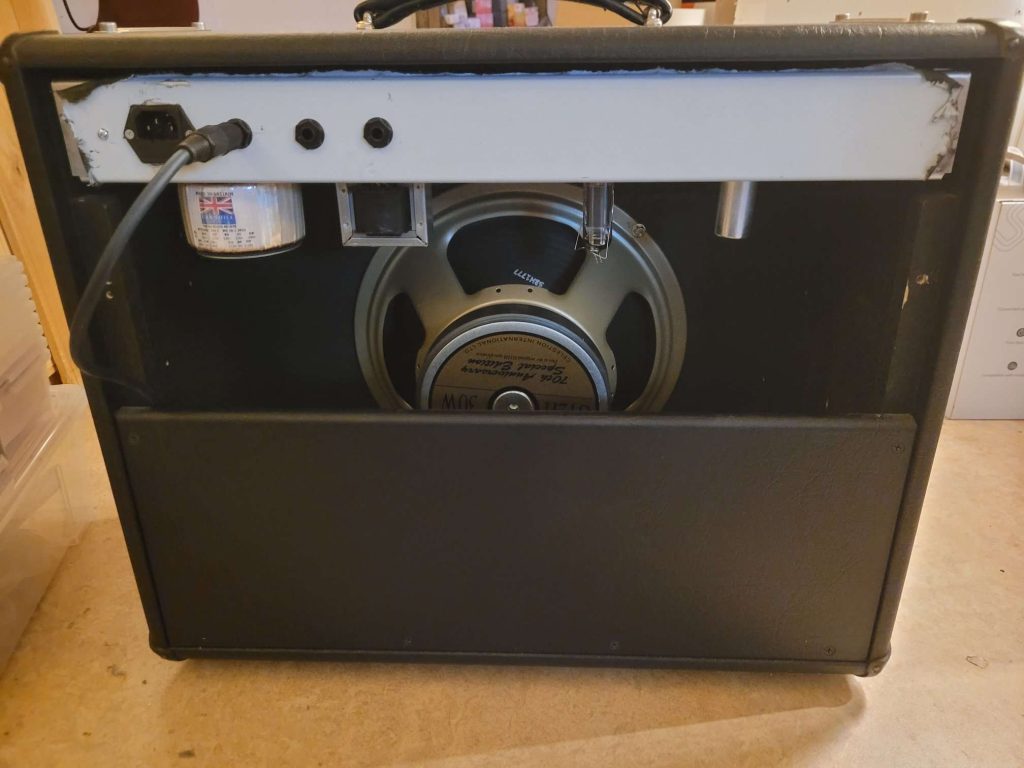(TAD) CTS 250K Std. Spl. P/P VAT Pot
Shinto saw rasp file
Harley Benton TE-53KR BL Tribute Series
West Coast Grooves
Whole album playslist – Guthrie Govan
Two 4 cable method(s)
Roland JC-22 Jazz Chorus stereo combo amp
Touch less. Play more.

AIRSTEP Lite is the simplified version of AIRSTEP, it has removed all hardware control interfaces and only kept the Bluetooth to send MIDI and HID messages. This means that Lite can only connect to mobile phones, tablets, and computers to control software, but cannot control hardware devices. In addition to this, the other functions of Lite are the same as AIRSTEP. And, can be re-programmed (Lite Advanced firmware) to function as an Airstep Play: Foot control the playback, loop, speed and pitch of video & audio on iOS, Android, Mac and PC.

KZ Acoustics : A Roundup of all KZ Earphones
20 Awesome Guitar Riffs through space, time, and genre, on the BOSS GX-100
Multi FX Comparison

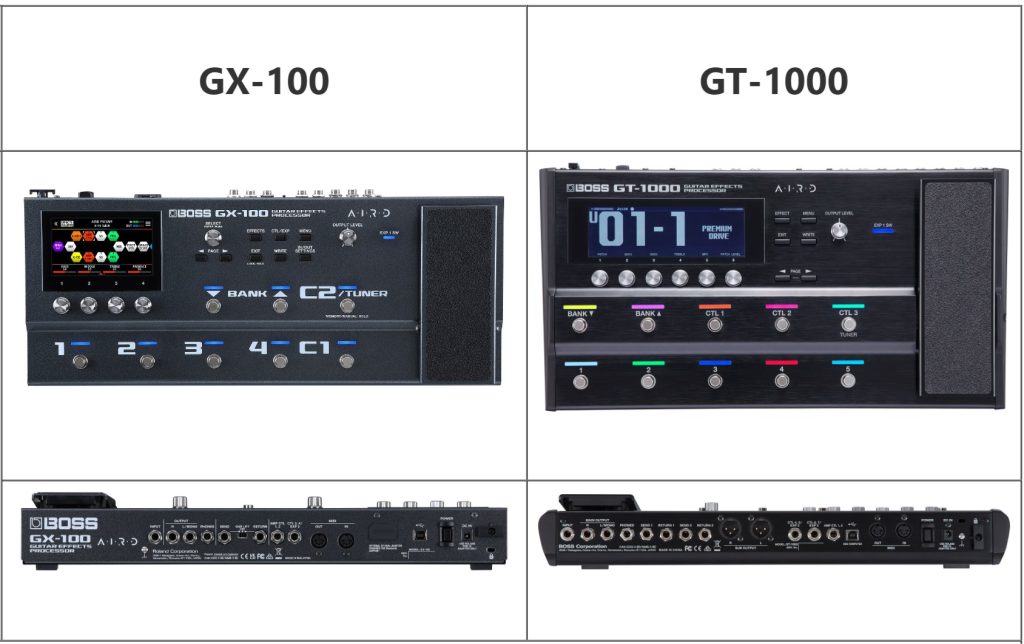

No one’s using the WoodRow
Line 6 M13 Stompbox Modeler
Line 6 kennen we ondertussen al jaren als een bedrijf dat steeds kwaliteit levert, en om de zoveel tijd een nieuw product lanceert dat de rest van de digitale wereld weer op achtervolgen zet. De nieuwe M13 Stompbox Modeler is niet echt een nieuw product, maar eerder een samenvatting van hun gekende prestaties. De immens populaire stompbox- reeks, bestaande uit de DM4, DL4, MM4 en FM4 (drive-, delay, modulation- en filtermodeling), wordt namelijk in deze enkele multi-fx gepropt. Benieuwd of men de kwaliteit en gebruiksvriendelijkheid van deze gekende units heeft kunnen behouden!
ALGEMEEN
Concept
Het concept achter de meeste Line 6-producten is ondertussen wel gekend: je neemt een aantal klassieke effecten of versterkers, en gaat deze zo dicht mogelijk benaderen via digitale technologie. Deze aanpak is ondertussen zo wijd verspreid, dat het bijna makkelijk wordt om te vergeten dat Line 6 een ware pionier is als het aankomt op deze digitale technologie. Voor de M13 biedt men dus een multi-fx pedaal die volledig werkt als een pedalboard met losse effecten. Je kan dus de effecten apart instellen en onafhankelijk van elkaar in- en uitschakelen. Daarnaast zijn er ook nog enkele extra functies, zoals de looper.
Vormgeving
Op dit vlak laat Line 6 zelden of nooit steken vallen, en ook ditmaal is de styling een schot in de roos. De combinatie van de zwarte behuizing en de gechromeerde knoppen en beschermranden geeft een zeer stoer uiterlijk. De verschillende units zijn duidelijk onderverdeeld, en aan de hand van een makkelijk te volgen kleurencodering (zie verder) kan je alles uit elkaar houden.
Handleiding
Ook hier is Line 6 een voorbeeld voor zowat alle ander merken. De handleiding is, zoals steeds, overzichtelijk en zeer informatief, maar weet tegelijk toch een humoristische ondertoon te houden. Je krijgt twee verschillende handleidingen: een voor de exacte werking van het toestel, en een tweede handleiding met alle info over de verschillende gemodeleerde effecten.
Read more
Germanium Transistors
For the Aion FX Radian Germanium Boost diy kit
-
OC-44:
hFE=66
Ic=.73mA
Ube=147mV
ICEO=46uA
ICEs=4uA
-
OC-125:
hFE=89
Ic=1.3mA
Ube=137mV
ICEO=.35mA
ICEs=14uA
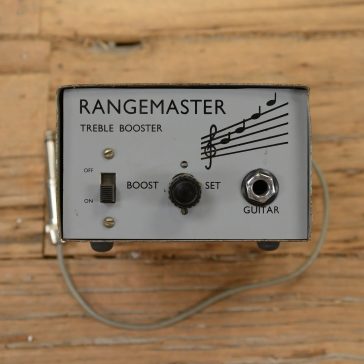
The Radian Germanium Boost is an adaptation of the Rangemaster Treble Booster produced by Dallas Musical Ltd. of London beginning in 1965. (Dallas would later merge with Arbiter Electronics to form Dallas-Arbiter, best known for the Fuzz Face.)
The Rangemaster was originally designed to add treble content to somewhat dark British amplifiers such as the Vox AC30, but it took on a life of its own in the hands of Brian May, Tony Iommi, Rory Gallagher, and several other highly-regarded guitarists of that era.
The original Rangemaster was not actually a pedal, but rather a freestanding unit that was intended to sit on top of the amplifier. Bypass was done via a slide switch on the front of the unit, so it wasn’t practical to turn it on and off while playing, and it was used as an always-on tone enhancer.
The Radian is a pedal conversion of the Rangemaster with one big enhancement: a voltage inverter has been added which allows it to be powered with a standard center-negative adapter while maintaining the positive-ground operation of the original. The PCB also includes a biasing trim pot so you can dial in a perfect bias without having to swap out resistors.
The other enhancement is a “Range” toggle switch that lets you choose between a treble boost, mid boost, or full-range boost. The treble-boost effect in this circuit is achieved by first cutting low frequencies, then boosting the whole signal so that the lows are restored to normal and the treble frequencies are emphasized. This toggle switch lowers the low-frequency cutoff point so that less of the signal is cut and more is boosted.
Waterslide Decal Paper
Boss RC-3 Loop Station
Boss RC-3 Loop Station just add Boss FS-7
N5X British Overdrive amplifier part 2
I found a second hand Wide Body Mesa Boogie Mark IV combo housing and ordered a corresponding
Aluminum Chassis Mesa Width Style and got some special delivered chassis straps for it and put the DIY Ampmaker NX5 inside
combined with a B-Stock 12 inch 16Ohm Celestion G12H anniversary speaker
for now running with a Mesa 12AX7 and a JJ EL844 ?
One of its greatest features, is the Power pot, a VCB/VVR voltage control kit going from 256 Volts at maximum to 21 Volts at minimum (actual measurements), making overdriving the tubes by diming both Gain and Master pots a breeze, for tasty rock sounds in the living room.
It will pair up with my Marshall DSL-5CR
This was a fun and educational (9 months!) build !
Read more
ZZ Top – The Complete Studio Albums 1970-1990
ZZ Top – the Studio Albums 1970 – 1990 is a 10 CD boxset of the band’s classic studio albums from their Warner Bros. Years. This compact, clamshell boxset features each album in a mini, vinyl replica card sleeve with original artwork, including replicated original gatefold sleeves for Tres Hombres and Tejas. Most importantly the original audio tape versions will finally be available, for the first time, on CD for three of the albums: First Album, Rio Grande Mud, and Tejas, and the original masters for Tres Hombres and Fandango will also be included. Much discussion has been had on the quality of the mixes released on CD in the 1980s but now the original audio will be available once and for all in an amazing boxset!

MIDI Reimagined
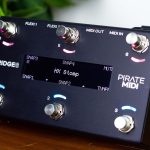
a next-gen MIDI controller
100 banks, more than 80 messages per switch, stackable messages, and flexible MIDI routing are just the beginning. The BRIDGE6 is a compact, next-gen MIDI foot controller with no compromises. A lightning fast ARM processor and plenty of storage means regular and ongoing firmware and feature updates.
Come out of the Dark Age
Connect everything – your gear, apps, and plugins – and control them exactly the way you want with RGB colour feedback and a high-contrast, easy-to-read display. White OLED graphical display and 12 RGB LEDs let you customise labels and text.
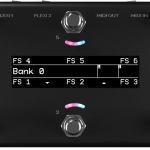
Control everything
Configure to your needs with our sleek, intuitive web editor. Export your layout, and use our huge device library to save you hours of setup time. Add wireless MIDI with CME WIDI devices.
Never lose track of time
With two independent MIDI clocks on board, LFOs sync’d to those clocks (or not), and the ability to turn the tempo into analog switch output, or pulse output, you really do have the best of all worlds.
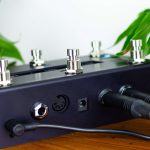
Flexiport Magic
Two 1/4″ TRS jacks give you 12 options from MIDI Out (all TRS types) to Expression In, Aux Switch In, Sync Pulse Out, and our unique Device Link protocol for high-speed communication between PIRATE MIDI devices with Flexiports.
Community driven
Many of the awesome features we’ve implemented have been the result of lots of discussions with you – the one who actually uses the device! We continue to closely and personally interact and chat with anyone who wants to be a part of our community. You can suggest features, tweaks, report bugs, and give us ideas on how to improve your user experience.
It’s really that simple
Analog Man Prince of Tone overdrive
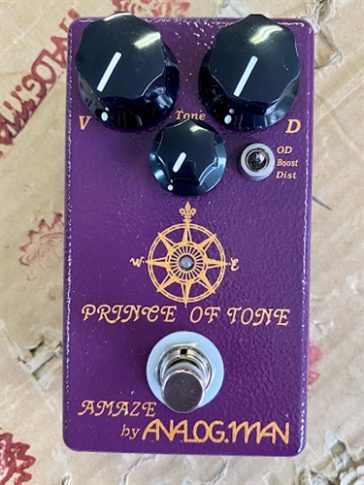
Description
The POT is pretty much the same as half of the King of Tone, with an external MODE switch standard. It is the same as the KOT with HIGHER GAIN option, so you can use the full range of the DRIVE knob and it has a little more drive at the top than a normal gain KOT. The DISTORTION mode is improved though, for a louder, stronger distortion sound. See http://www.kingoftone.com for more info.
Power Jack is standard on the POT –
The TREBLE trimpot is inside, just like the KOT.
There are also two new DIP switches inside! They are a bit subtle at some knob settings and modes:
DIP1 : LO-MID lift switch. The tone from your lower strings will be enhanced a little when DIP switch is ON.
DIP2: TURBO switch- with higher gain settings you’ll hear deeper compression, especially in DIST mode. You will hear a brighter, crunchier sound with this on at higher DRIVE settings when this DIP switch is ON.
The three modes, as on the KOT, are:
1) Normal Overdrive mode (OD mode): This is the standard King Of Tone sound, – a touch drive available than a tube screamer. Can get much louder than a tube screamer. The RED side of KOT has this setting from the factory.
2) CLEAN mode : This mode has less distortion, it can be used for clean boosts or clearer, louder sounds. It’s sort of a cross between a true clean boost and an overdrive. CLEAN MODE is even less compressed and louder than the OD mode. I love this mode with high drive settings too! The YELLOW side of KOT has this setting from the factory.
3) DISTORTION mode : more drive than the standard mode- a touch of hard distortion. The sound is more compressed, yet retains the pedal’s character. Same volume as OD mode.
At low DRIVE settings, or when playing softly, there is not much difference between the three modes, they all can get pretty clean and have the same level at low drive settings. The ability to clean up when playing softly is a very useful feature of this pedal. The Drive knob works like the KOT with HIGHER GAIN OPTION, so you can set it anywhere and get great tones.
The DRIVE knob taper is different than the KOT. It comes up faster and more linear, while KOT has a lot going on from 2:00 to max. So comparison to a KOT with HG option will not be the same at the same knob position unless it’s up all the way, where they are the same.
We are making these by hand in China by the same people who are making our Analog Delay. Though it’s made in China, we use the same parts as the King of Tone – best Japanese chip and capacitors, not cheap Chinese parts. No surface mount parts, NO ROBOTS, everything is vintage style and hand wired for easy maintenance and repairs unlike most Chinese pedals and most USA “boutique” machine-made pedals which are disposable if they have any problems like a pot, jack, or switch that wears out.
POWER SUPPLY: A Standard Boss PSA120 type 9V DC adapter will work fine. Center is negative. The pedal uses only about 6mA of current at 9V. You can get a fuzzier sound if you want, at lower voltages, for example the SAG mode on the pedalpower2. When your battery dies you will notice the pedal will not get nice and clean, the sound will be hairier. Use a good Alkaline battery or a power supply for best results. You can use higher voltage for more headroom, 12V is common, 18V is safe too. Clean boost may be improved the most with higher voltage.
CHIPS: You can also try other standard dual op-amp chips in the Prince of Tone. Just make sure you put it in the right way, with the pin#1 dot on the side with the chip socket cut-out. The TS-808’s JRC4558D chip sounds good in this pedal, especially with single coil guitars and smaller Fender type amps. You can try a high fidelity chip for the CLEAN mode which may work well.
Size
We made our own case for this pedal, it’s lower and a little shorter than our Beano Boost / Orange Squeezer / large SunFace box, and a little bigger than the Astrotone / Peppermint / small Sunface size.
Size is 2.5″ wide x 4.5″ long x 1.5″ tall, not including switch/knobs/jacks.
Buffer option
If you run through some long cables to your amp, or through some tone sucking pedals (volume pedals, etc) you might want to add the optional buffer inside the POT. If you run the POT into a pedal with a good buffer like our ARDX20, then it’s not needed at all. There is no room for a battery with the Buffer option. The buffer will work great at higher voltages like 12V or 18V also. See our BUFFER page for more info.
N5X British Overdrive amplifier
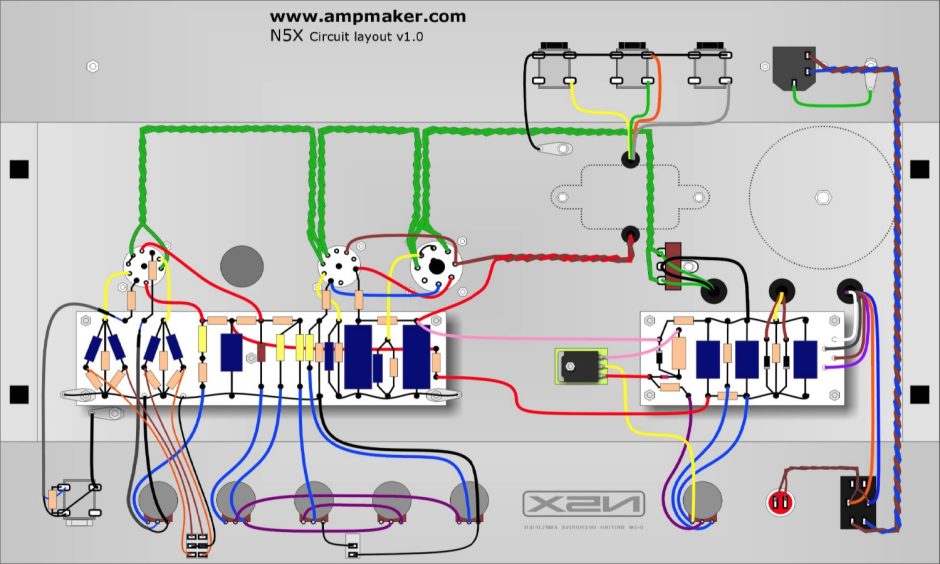
As I’m gearing up to make this N5X British Overdrive amplifier DIY kit
as a buddy for the Marshall DSL5CR with upgraded Celestion G10 Vintage,
fab four
Compare 10inch Celestion
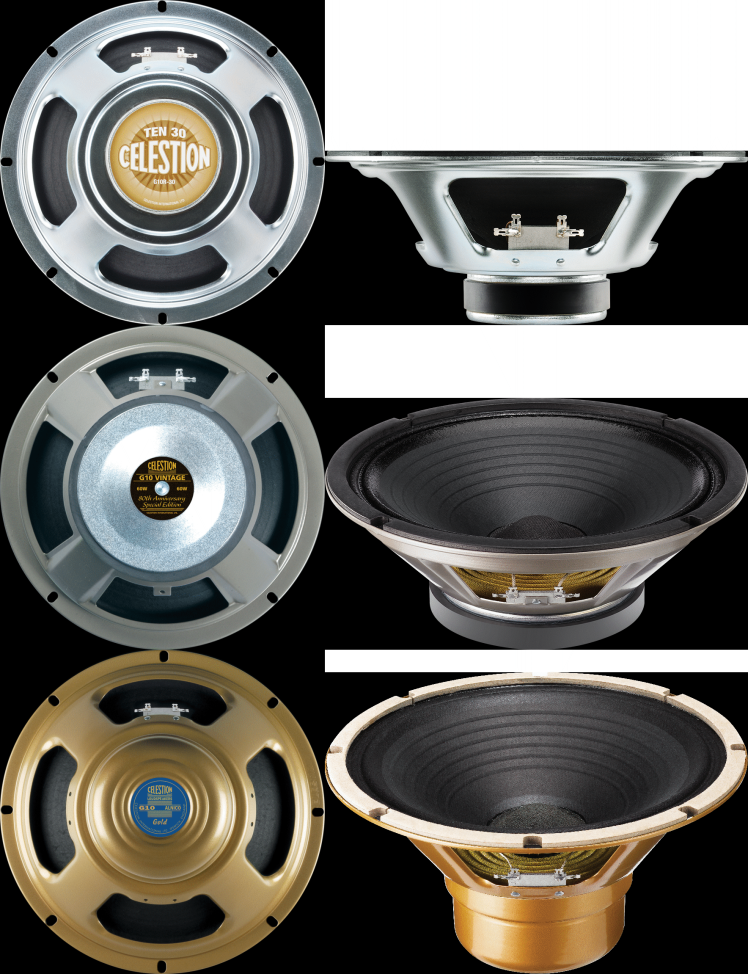
Celestion Ten 30, 30W, 95dB, 85-5000Hz, 31mm/1.25inch VC, Ceramic, 0.37kg
Celestion G10 Vintage, 60W, 97dB, 100-5500Hz, 44mm/1.75inch VC, Ceramic, 0.88kg
Celestion G10 Gold, 40W, 98dB, 80-6000Hz, 44mm/1.75inch VC, Alnico, 2.95kg
looper switcher – bright onion pedals
Strymon Deco Midnight Edition
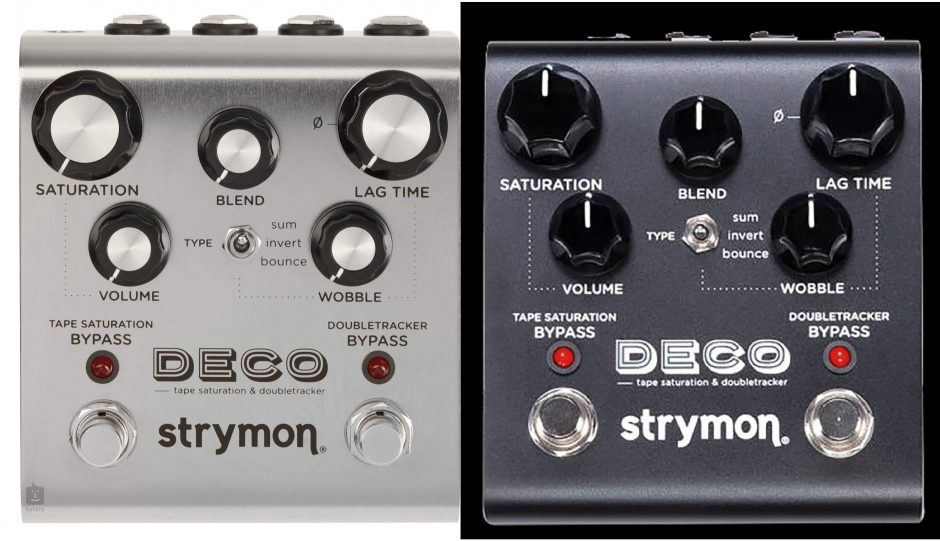
happy it has a blend knob, so even if the effect is not (set as) subtle at all, one can lower its volume so it sounds less ‘in your face’
perfectly chosen for great sound at low levels
When you think there is a choice, and yes there are a lot of options to ‘choose’ from, but all you witness is gravitation… ?
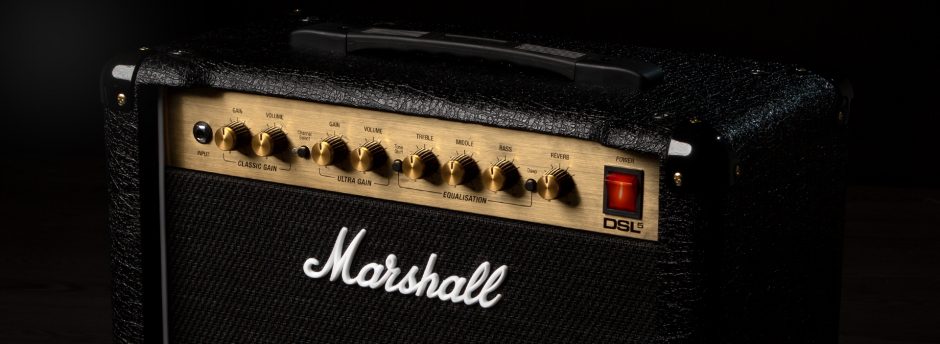
Boss ME-80 Guitar Multiple Effects
Hands-On Access To A World Of Great Tones
Mobile, battery powered, and filled with a diverse selection of flagship-quality BOSS amps and effects, the ME-80 is the ideal compact tone processor for performing guitarists. A friendly knob-based interface makes it simple to dial in great sounds in seconds, while easily selectable operation modes offer the flexibility of individual stompbox-style on/off or instant recall of complex multi-effects setups. Unique new footswitches deliver twice the control of previous designs for efficient and intuitive effects switching, patch selection, and real-time sound shaping while playing on stage. The free BOSS TONE STUDIO software unlocks even more tonal possibilities, providing a cool graphical interface for tweaking and organizing sounds on your computer, plus a web connection to BOSS TONE CENTRAL for direct access to free gig-ready patches created by top pro guitarists and much more.
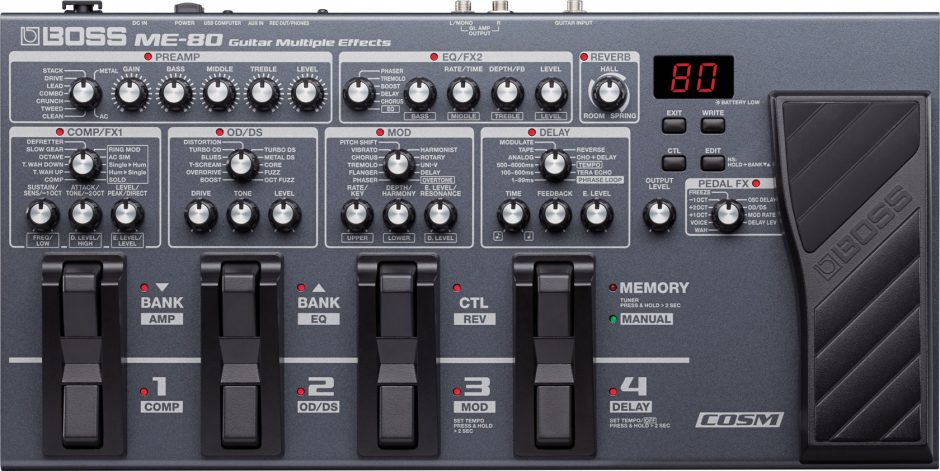
Thiele TL806 vs Marshall JVM-C212
PRS MT-15 amp into two diy TL806 with EVM-12L &
PRS MT-15 amp into Marshall JVM-C212 with Celestion G12Heritage and G12Vintage
no alterations, 0sec Thieles, 38s Marshall, 1m54s Thieles again:
Normalized Gain (Adobe Premiere Elements), 0sec Thieles, 38s Marshall, 1m54s Thieles again:
and this would be kind of uh
all-in-one loadbox, attenuator, speaker sim and DI
Was it actually worth it?
follow up: https://youtu.be/4sfY0te40Nk
PRS MT-15 2020
15/7 Watts (Switchable), 2 Channels, Power Tubes: 2x JJ 5881, Preamp Tubes: 6x JJ ECC83S
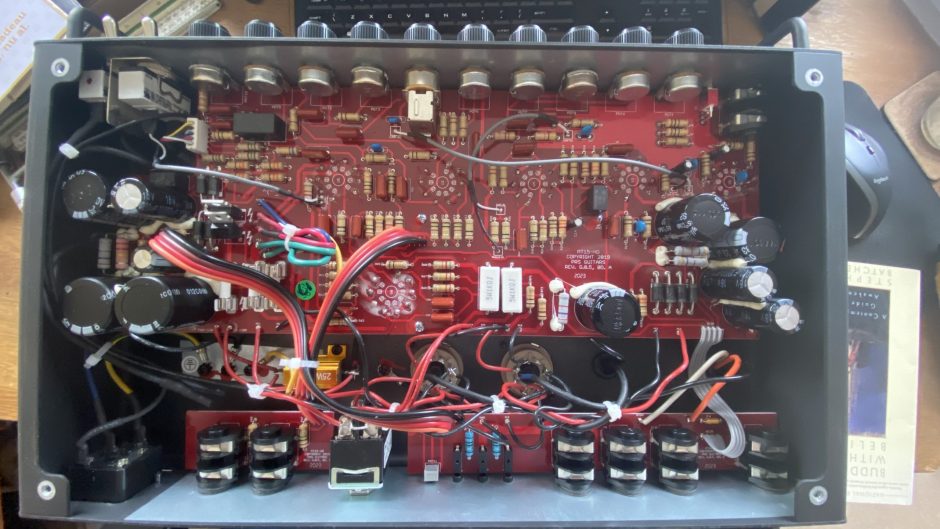
Series Box
Middle Aged Gear Junkie
Made in Japan
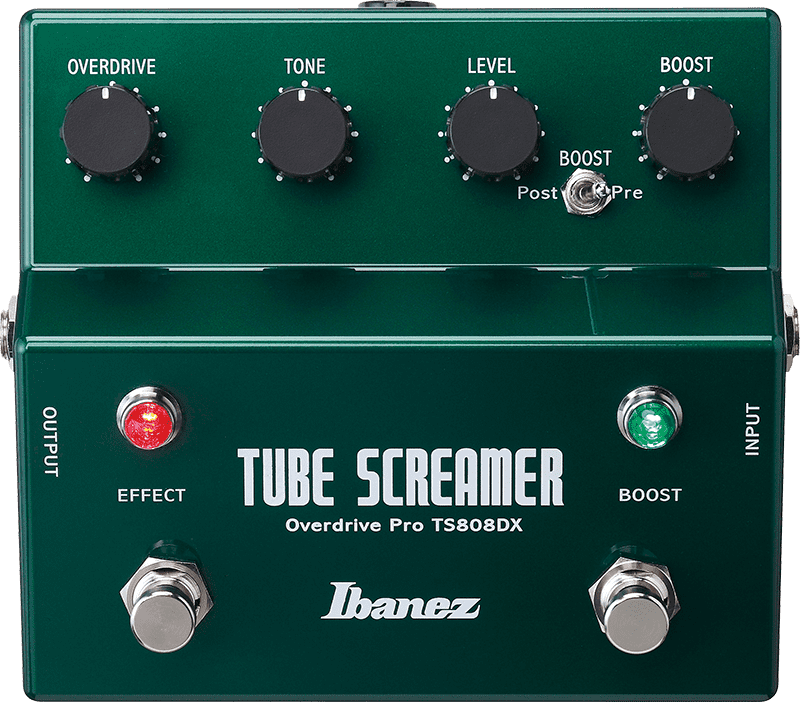
For over 30 years the Ibanez TS808 Tube Screamer has been one of the most popular overdrive pedals in the world. The unmistakable little green stomp box has been a perennial favorite, cherished by rocks most celebrated guitarists for it’s warm, creamy tone and unequivocal responsiveness. Now Ibanez has expanded the palette of “The Screamer” with the new TS808DX.
Simply put, this new version is two pedals in one: A true TS808 Overdrive, featuring the JRC4558D IC for that signature soft, subtle clipping sound, and a boost circuit, capable of adding up to 20db at the tap of a switch. The pedal incorporates two individual, true bypass switches for total independent control, allowing the Overdrive and the Booster to be used separately or in conjunction with each other. Add the Boost for a few extra db while playing through the Overdrive circuit, or just engage the booster on its own for that little extra lift while playing clean.
A toggle switch allows for the choice of placing the Boost Pre or Post the Overdrive section and a rear panel switch offers the option of 9-volt or 18-volt operation, It’s the Screamer you know and love, taken to a whole new level.
Read more
MXR M300 Reverb
Read more
Slightly more open with a tighter bottom end
ZERO WATT STEREO AMPLIFIER: Integrate your pedalboard adding full stereo routing directly to a PA System, Amps, Audio Interfaces or anything you need with its 4 simultaneous outputs (2 x XLR, 2 x 1/4 bypasseable outs), stereo effects loop, headphones out and aux in.
Read more
Benson PreAmp Pedal
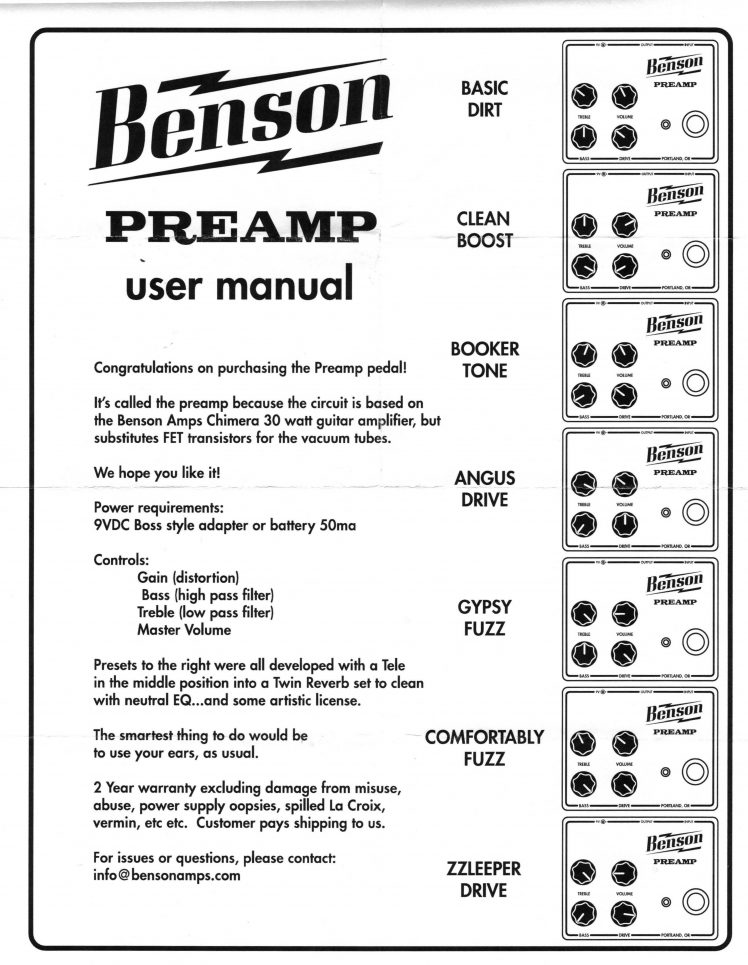
Two Notes Audio Engineering – Torpedo C.A.B. professional speaker simulator
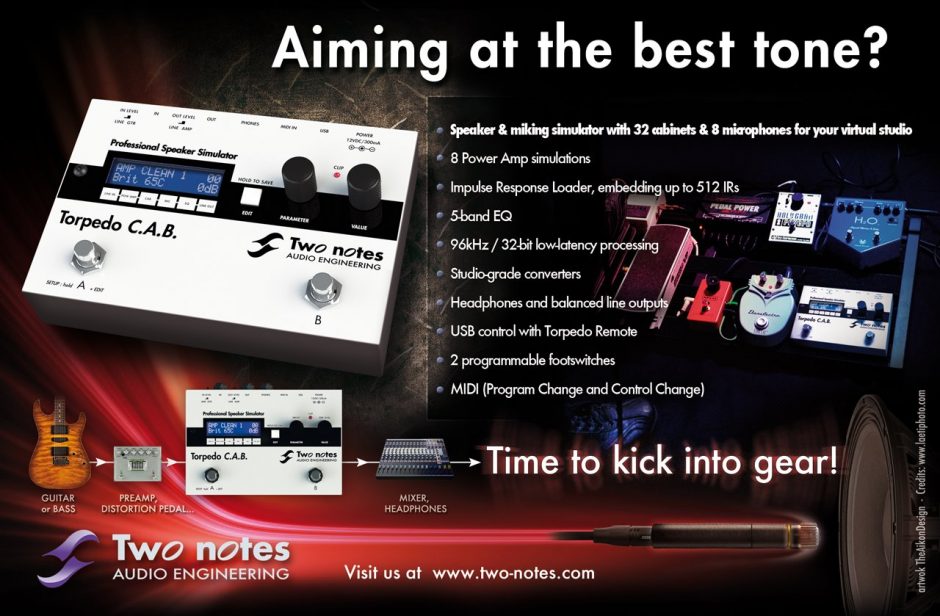
Drawmer CMC2 – Compact Monitor Controller
The CMC2 is a compact monitor controller that has been designed to provide the same top quality audio, transparency and accuracy of Drawmer’s other monitor controllers, such as the MC2.1 and MC3.1, whilst retaining all the necessary features that the smaller project studio would require without the cost of the advanced features that would seldomly be used.
Can you trust the audio that your current monitor controller is providing? Is it colouring the sound? For all Drawmer monitor controllers it is imperative that what you record is exactly what you hear. The active circuit has been designed to faithfully produce the audio signal whilst removing many of the problems that a passive circuit will bring. There is one thing that should always be absolutely guaranteed – that you can rely on the accuracy of your monitor controller.
15-Watt All-Tube Amplifier

The Tweaker is an ultra compact and amazingly versatile all-tube amp that offers a unique and sophisticated tone with seemingly endless tonal variations via the on-board “Tweaker” selector switches. Powered by a pair of 6V6 power tubes, the TWEAKER will set the new standard for gigging micro amps. The gain, EQ and master sections each have a Tweaker switch providing a wide-range of tones from the ultra smooth and satisfying to fully over-saturated lead tones.
Are you a tweaker?
Hidden inside the TWEAKER is a vast array of tones not usually found in amps this compact. Each of the five toggle switches on the front change the character of the amp. The TIGHT and BRIGHT switches shape the low and high end from soft and smooth to punchy and aggressive. The GAIN switch goes from sparkly clean to an all out high-gain assault.

The EQ switch lets you select from pristine American to classic Brit and even the elusive VX AC sound. The CLASSIC/MODERN voicing switch allows you to select either soft and smooth or hard and edgy power tube tone. It’s all in there to satisfy the ultimate “Tweaker”.
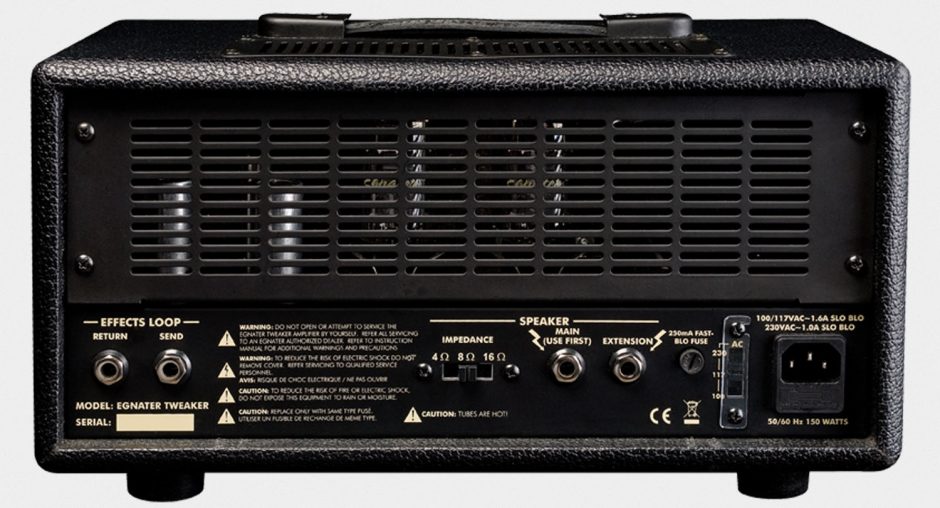
Tweaker Features and Information:
15 Watts Amplifier, 2 x 6V6 Power Tubes, 3 x 12AX7 Pre-amp Tubes, Master Volume, Gain and 3-Band EQ, Modern/Vintage Amp, Voicing Switch, Buffered Effects Loop, Selectable AC, British and American Tone Controls, Clean/Hot Gain Selector, Tight & Bright Voicing Switches, 100V / 115V / 230V Switchable, 14″ (L) x 8.25″ (W) x 6.75 (H)
MannMade USA Block, Brass – PRS CE24 Bridge
Korean Molded PRS Patented Tremolo Bridge with stock steel block
Play audio with the steel block:
Block, Brass. Fatten the mid range tone and sustain!
Play audio with the brass block:
That Pedal Show made me do it
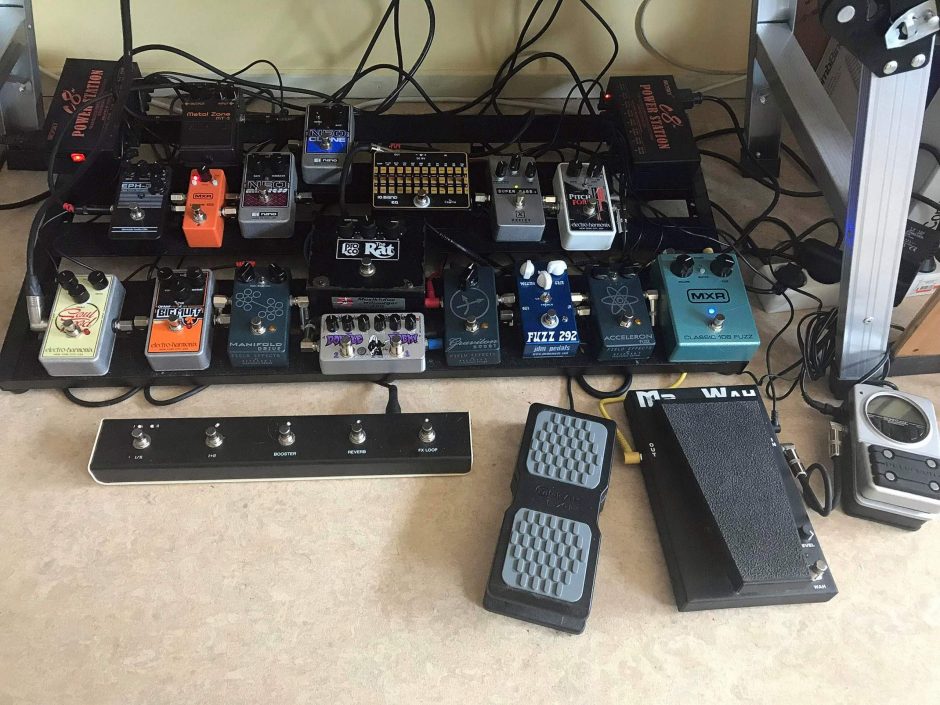

Sequence:
01. Peterson Stomp Classic Strobe Tuner
02. Morley – M2 Wah
03. MXR M173 Classic 108 Fuzz
04. Resonant Electronics Field Effects Acceleron Fuzz
05. JDM Pedals Fuzz 292
06. Electro Harmonix Pitch Fork Polyphonic Pitch Shifter + M-Audio EXP
07. Keeley X Pedals Super Bass X compressor
08. Resonant Electronics Field Effects Graviton Boost
09. Caline CP-24 10-band EQ
10. ProCo ‘Vintage Rat’ distortion
11. Zvex Double Rock distortion/boost
12. Resonant Electronics Field Effects Manifold Drive
13. Electro Harmonix – Op-Amp Big Muff Pi Distortion Sustainer
14. Electro Harmonix – Soul Food Distortion Fuzz Overdrive
15. Electro Harmonix Neo Clone analog chorus
16. Electro Harmonix Neo Mistress flanger
17. MXR – M290 Phase 95 Dual Phaser
18. LovePedal Hermida EPH-3 Tape Sim Delay
19. Boss HM-2 Heavy Metal Distortion Pedal
-Mosky – C8 Powerstation
Resonant Electronic Field Effects
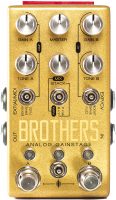
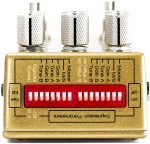
I once had a Chase Bliss Audio ‘Brothers’ pedal, which has a JFET Boost, Drive and Fuzz pedal and also an IC Fuzz, Drive and Boost pedal all in one and then choose to run those IC and JFET either A>B, B>A, or Parallel, and then with 33 total routing configurations.
But one had to choose between Fuzz, Drive and Boost on each side. And I really liked all 3 individual effects on the JFET side of the pedal. So now I’m sourcing the 3 individual pedals of that JFET side being the ‘Graviton Boost’, ‘Manifold Drive’ and ‘Acceleron Fuzz’ Field Effects by Resonant Electronic Design

JDM Pedals Fuzz 292
The key to our Custom Silicon Fuzz Pedal “Fuzz 292″ is a 3-way voicing switch; treble-boosted fuzz, a standard moderate gain voicing, and high gain fuzz-fever freakout. So at the flick of a switch, the Fuzz 292 changes it’s overall character and how it reacts to your picking and guitar volume knob adjustments.
In addition to the (naturally necessary) volume control and 3-way voicing switch, we’ve added a tone and gain control.
– The “bias” control shapes the character of the fuzz, bending the sound from a smooth, overdrive-like fuzz into a gated, “ripping velcro” fuzz tone (a la some of Homme’s best solo tones in QOTSA.)
– The “Gain” control acts just like the volume pot on your guitar – for a fuzz, this means it smooths the tone, providing a more overdrive-like quality. Or crank it for a blast of 60’s/70’s retro fuzz fry!
Read more
Line 6 HX Effects
Crafted with eight capacitive footswtiches capable of running nine simultaneous effects taken from a bank of 128 presets and over 100 DSP effects from the Helix line as well as DL4, DM4, and more, the Line 6 HX Effects is one of the most accessible entryways into the world of high-grade multi-effects pedals. Almost infinitely tweakable, each individual LCD display lets users sculpt three individual parameters per effect, and for the fuzzheads in the audience, Line 6’s Transtronic technology faithfully emulates the specific characteristics of germanium and silicon transistors. An attractive, compact option for replacing an entire board.
HX Effects™ was created for guitarists and bassists who want our flagship Helix® effects for traditional amp and pedalboard setups. Powered by the same audio engine as Helix processors, HX Effects includes the full array of Helix effects plus legacy effects from the M-Series and Stompbox Modeler pedals. All in a compact pedal that fits easily on your pedalboard.
HX Effects gives you complete control when editing and crafting effects presets

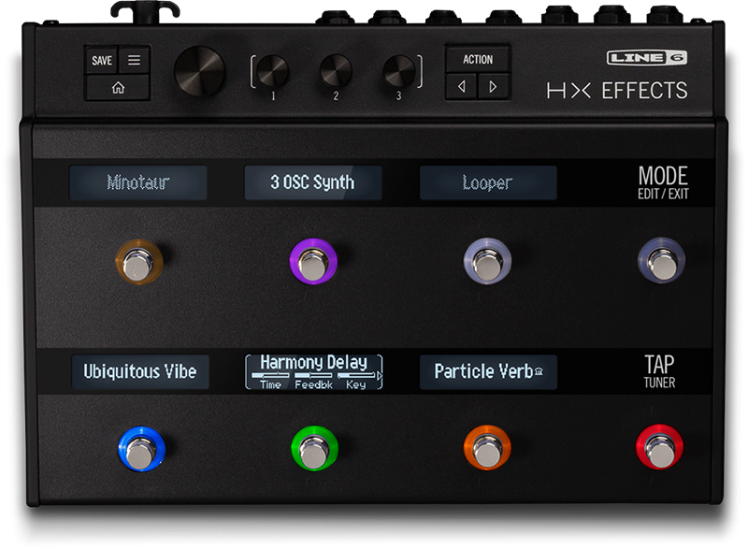
ProCo Vintage RAT
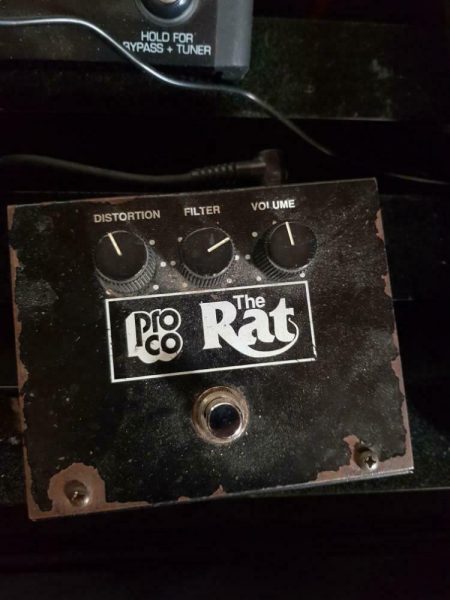
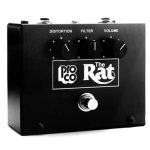
Vintage RAT 1991-2005
As the vintage instruments market surged, demand grew for a reissue of the “large box” RAT pedal. The Vintage RAT can easily be identified from an original in two ways. First, the Pro Co logo does not contain the “Sound Inc.” text written down its right side. The reissue also features an easy access battery compartment on the pedal’s bottom.

For 25 years, discerning guitarists have used the Rat’s “magic” sound, its perfect blend of distortion, sustain and cutting power, usually found only at a volume too loud for club and studio work. Painstakingly researched and designed to produce a sound that is radically different from any “fuzztone” your have ever heard — a sound that sings and wails the blues, or spits and screeches the hardest rock’n roll. A sound that is as subtle as a vintage “twin”, or as bone crushing as a wall of those famous English stacks. The Rat’s smooth harmonic distortion and effortless sustain put the extra punch in rhythm work and makes solos cut through with authority and power.
Tune in just the right amount of overdrive, get the presence you need without any tinny treble, and balance the volume for the perfect extra “kick” for lead breaks. Distortion, sustain, fuzz, overdrive: the sound remains unmistakably yours. Not fake or gimmicky. Also the rat will not change the tone or power of your guitar when it is turned off; its true bypass switch disconnects it completely from the circuit when it is not in use, eliminating the loading effects common among other devices.
The Vintage Rat is a reissue of the original production models built circa 1977. It offers fat smooth distortion with effortless sustain. It gives a Marshall feel to Fender amps and humbucker muscle to single coil pickups. There is a wonderful natural compression to the Rat. As you search for your sound, you owe it to yourself to check out the Vintage Rat at great music stores everywhere.
VRAT Suggested Resale $149.95 RPS1 (Bat elim.) Suggested Resale $16.99
At some point there must be lunch
